
8D ASSOCIATION
The 8D Association is dedicated to promoting the history of the railways of South Lancashire, Merseyside and North Cheshire.
Widnes Locomotive Shed – 8D
Opened – 10th May 1874
Company on Opening – London and North Western Railway
Closed – 13th April 1964
Company on Closing – British Railways
Grid Ref – SJ515849

Looking into the shed at 8D during a visit by enthusiasts shortly after nationalisation. 3rd July 1948.
Photo by M J Mason. (Reproduced with permission from the Industrial Railway Society.)
In the early years of the St Helens & Runcorn Gap Railway it is likely that the locomotives that serviced the southern end of the line were stabled at Sutton Oak shed. However with the expansion of industry at Widnes from the 1840s onwards there must have been a need to stable engines locally. It is known that local factories had engines of their own for use on their systems and that these were stabled in simple wooden sheds. By the time that the London & North Western Railway (LNWR) took over what had become the St Helens Canal & Railway Company on the 31st July 1864 Widnes had become a major industrial centre.
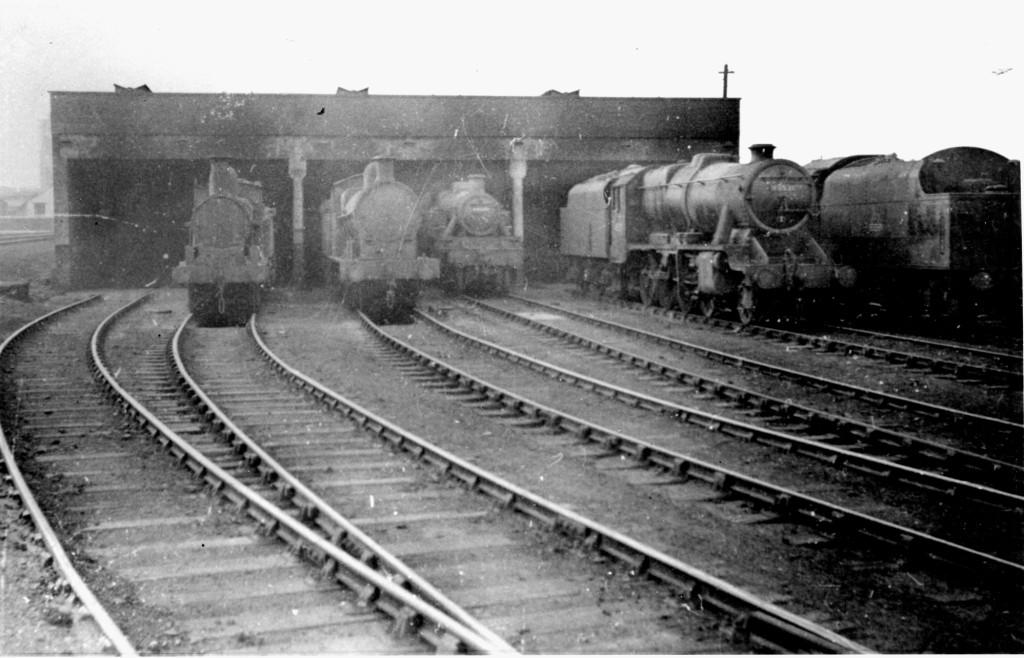
Photo by Jim Peden.

Just over twenty years after opening the engine shed is hemmed in by the extensive railway system in Widnes. With the new deviation line running to the north and the connection from the ex SH & RGR to the deviation at Widnes South visible.
The LNWR set about improving the railway at Widnes. The story of the improvements is worthy of an article in its own right and will be covered in a later. However the improvements which included the building of a new line, the Widnes Deviation, were important with regards to the history of the shed because it was built at the same time. The LNWR allocated the code 35W to Widnes Shed.

Photo by the late Eddie Bellass.
The LNWR opened the deviation line to goods services on the 1st April 1869. The new shed was located on the south side of the Widnes Deviation Line and to the south of it was a spur that connected the St Helens line to the Deviation thereby allowing passenger services to run into the ‘new’ Widnes Station which opened on the 1st March 1870. The shed had three roads and in 1873 it was approved to accommodate six locomotives. Careful study of the above 1870’s map shows that in its early form there was no turntable and only basic facilities. By 1879 there were 26 locomotives allocated to Widnes so some additional external storage lines must have been added. Certainly by 1890 the shed had developed into a six road shed that had a turntable and a coaling facility. Also to the south of the St Helens line spur additional sidings had been laid that were used for locomotive stabling. It was in this form that the shed would remain up until closure.
Photo by Brian Swinn.
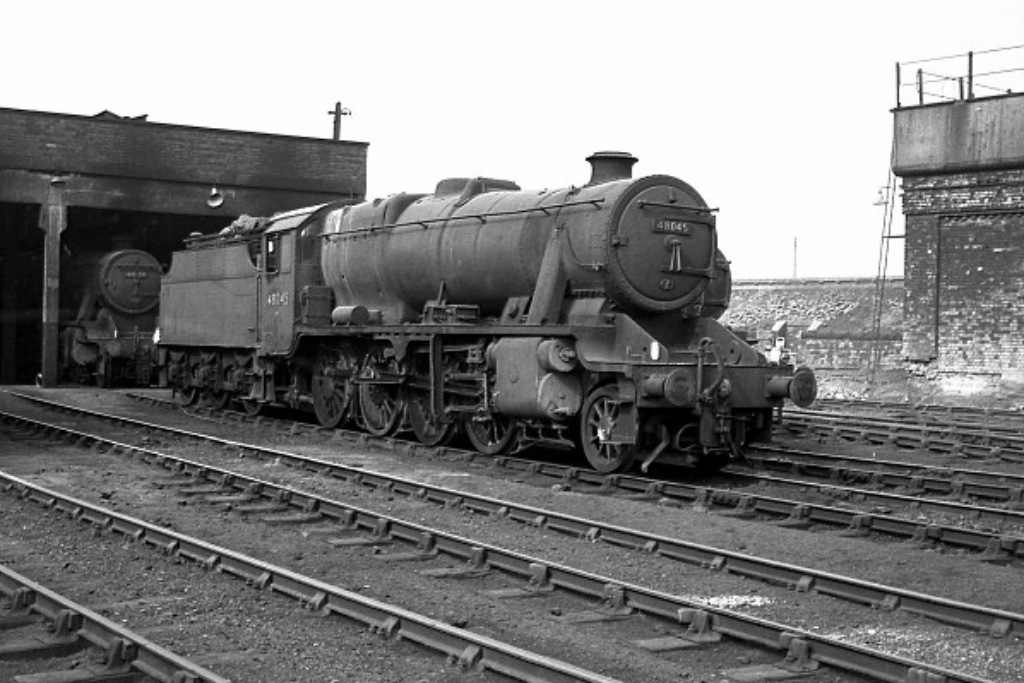
The duties performed by the Widnes based locomotives in the later part of the 19th Century would have been in the main goods turns but there were also passenger turns.
On the 1st January 1923 the Widnes Motive Power Depot was taken over by the London, Midland and Scottish Railway (LMS). They allocated it the code 8D. Throughout the 1920s and 1930s the shed employed over 100 men and had a typical allocation of 30 locomotives. As in the later part of the 19th Century the turns were mostly goods. The few passenger turns that there were included runs to Liverpool, Acton Bridge and to Manchester London Road.
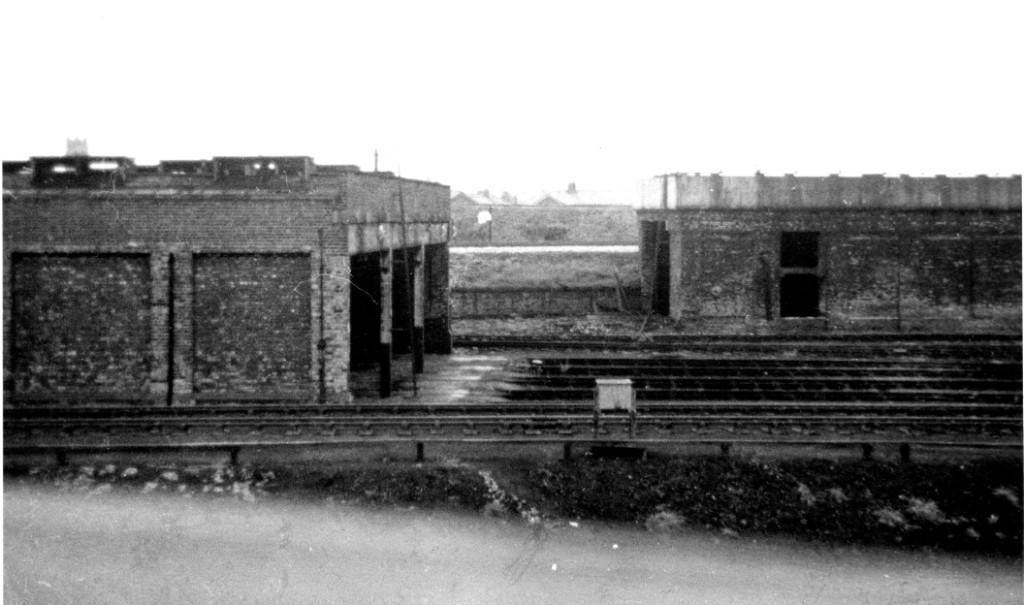
Photo by Richard Mercer.
During the Second World War the shed was extremely busy and the loco crews found themselves travelling further afield than the previously had done. On the 1st January 1948 the shed became part of the nationalised British Railways (London Midland Region). British Railways kept the LMS shed codes and so Widnes remained as 8D. Little changed in terms of the duties that Widnes based locomotives performed, although the ex Cheshire Lines Committee shed at Tanhouse Lane became a sub shed of 8D. The shed at 8D did not provide any motive power to its sub shed as this came from Liverpool Brunswick due to their being no direct connection between the ex LNWR shed and the CLC. The only connection was via a private siding and B.R. had to pay a toll to the owners to use it. The sub shed would close during the mid 1950’s and was demolished in 1956.
In the 1950’s there was a great deal of local trip working and runs to Gorton, Wigan Springs Branch and Liverpool. The decline set in during the early 1960s. Gradually the numbers of Locomotives declined and the shed closed on the 13th April 1964. Locomotive crews were transferred to other sheds in the area such as Speke and Warrington.
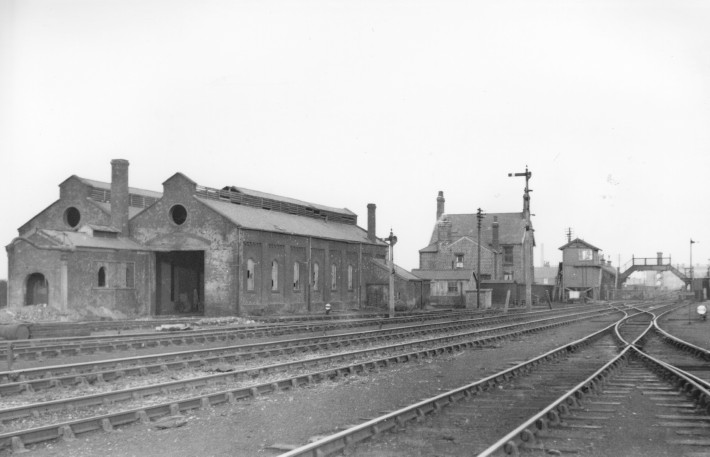
The ex CLC shed at Tanhouse Lane seen 3 years after becoming a sub shed of 8D. The building is in a semi derelict state with part of the roof missing and several broken windows it would be demolished in around 5 years. 10th November 1951.
Photo by Harry Townley. (Reproduced with permission from the Industrial Railway Society.)
8D (Widnes) Loco Allocations from January 1948 to April 1964.
Complied by Chris Hollins.
Below is a list of locomotives that had been allocated to Widnes Shed sometime in their lives from when ‘British Railways’ was formed in 1948.
During this period, 160 locomotives were allocated to the depot, only 4 of which were diesels. Of the 156 steam locomotives, one engine did not receive its allocated number as it was withdrawn before the full British Railways steam engine numbering system was adopted in October 1948. Some locomotives were allocated to the depot more than once, and spent a considerable time there, while others were at Widnes for a short period.
3MT Fowler 2-6-2T
No. 40003/7
3MT Stanier 2-6-2T
Nos.40107/118/122/125/134/137/143/201/202/207
2P Johnson 4-4-0
No.40527
2MT Ivatt 2-6-2T
Nos.41210/217/221/230/237/239/244
4F Fowler 0-6-0
Nos.44359/595
2MT Ivatt 2-6-0
Nos.46410/420/421/422/423/424/434
0F Stanier 0-4-0ST
No.47006
3F Fowler 0-6-0T
Nos.47349/361/490/594/597/601/616/656/659
8F Stanier 2-8-0
Nos.48017/39/45/129/136/139/166/175/188/206/296/308/318/323/326/425/437/462/466/
500/502/506/519/529/536/554/558/676/697/708/709/714/720/749/753/764/771/772
6F Bowen-Cooke 0-8-0
Nos.48907/939/9020/38/58/67/7173/74/79/81/116/126/150/157/170/232/343/357/366/416/417
0F Aspinall 0-4-0ST
Nos.51204/218
2F Webb 0-6-0
Nos.LMS 28095, Nos.58327/342/346/351/353/363/373/375/376/377/378/
383/393/394/395/396/400/402/411/413/415/419/420/424/427/430
J10 Parker 0-6-0
Nos.65138/157/167/184/186/198/209
J67 Holden 0-6-0T
No.68547
2MT Standard 2-6-0
Nos.78017/32/33/34/35/39
2MT Standard 2-6-0T
Nos.84023/24
WD Ministry of Supply 2-8-0
Nos.90140/141/147/157/178/192/227/242/257/317/423/532
Diesel Mechanical 0-6-0
Nos.D2372/394
Diesel Electric 0-6-0
Nos.D3793/794
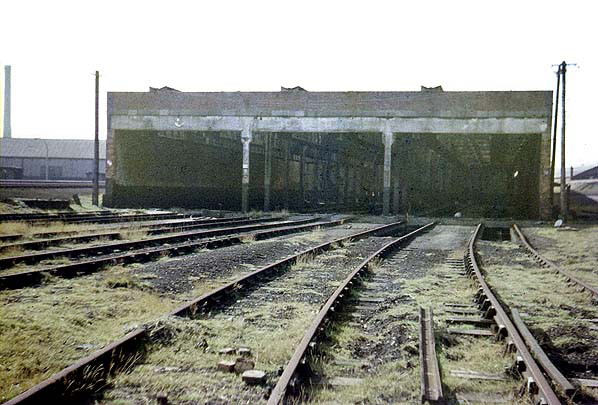
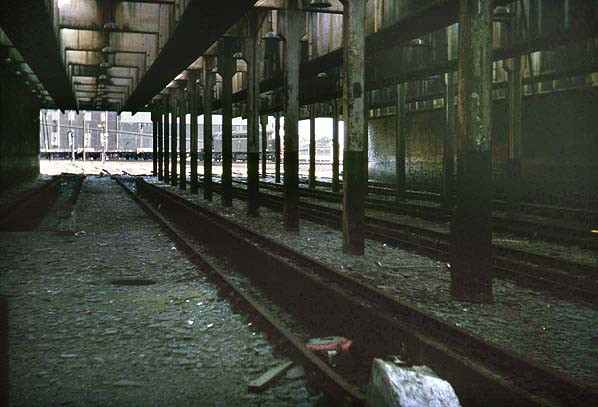
Both photos by Les Fifoot.
